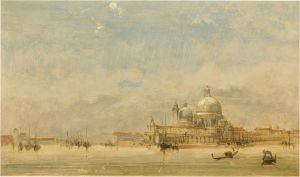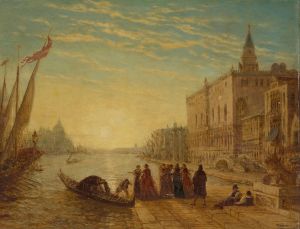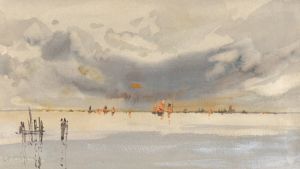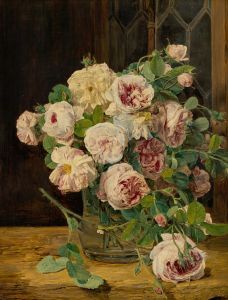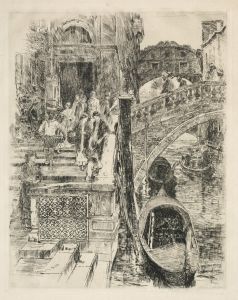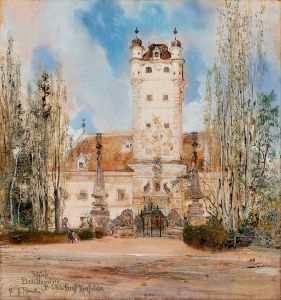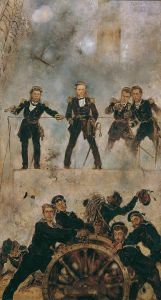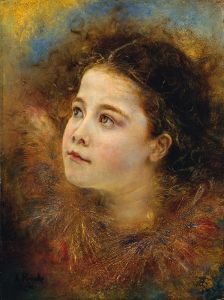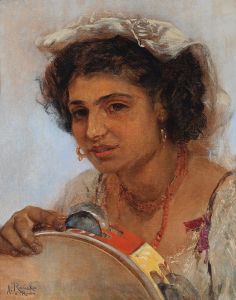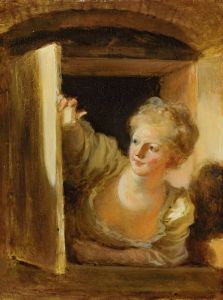
Mädchen an einem Fenster zum Markusplatz, Tauben fütternd
A hand-painted replica of Anton Romako’s masterpiece Mädchen an einem Fenster zum Markusplatz, Tauben fütternd, meticulously crafted by professional artists to capture the true essence of the original. Each piece is created with museum-quality canvas and rare mineral pigments, carefully painted by experienced artists with delicate brushstrokes and rich, layered colors to perfectly recreate the texture of the original artwork. Unlike machine-printed reproductions, this hand-painted version brings the painting to life, infused with the artist’s emotions and skill in every stroke. Whether for personal collection or home decoration, it instantly elevates the artistic atmosphere of any space.
Anton Romako was an Austrian painter known for his unique style that bridged the gap between the Biedermeier period and Impressionism. One of his notable works is "Mädchen an einem Fenster zum Markusplatz, Tauben fütternd," which translates to "Girl at a Window to St. Mark's Square, Feeding Pigeons." This painting is a fine example of Romako's ability to capture intimate and everyday moments with a sense of realism and emotional depth.
The painting depicts a young girl standing by a window overlooking St. Mark's Square in Venice, a location renowned for its historical and cultural significance. The square, known as Piazza San Marco in Italian, is one of the most famous public spaces in the world and a popular tourist destination. It is home to several iconic landmarks, including St. Mark's Basilica and the Campanile. The setting of the painting suggests a connection to the vibrant life and architectural beauty of Venice.
In the artwork, the girl is shown feeding pigeons, an activity commonly associated with St. Mark's Square, where pigeons have been a long-standing feature. This simple act of feeding birds adds a layer of everyday charm and innocence to the scene. Romako's attention to detail is evident in the way he captures the girl's posture and expression, as well as the play of light and shadow in the composition.
Romako's style is characterized by a departure from the strict realism of his predecessors, incorporating elements that would later be associated with Impressionism. His brushwork in "Mädchen an einem Fenster zum Markusplatz, Tauben fütternd" is loose yet deliberate, allowing for a sense of movement and spontaneity. The use of color is subtle, with a palette that enhances the serene and contemplative mood of the painting.
The painting reflects Romako's interest in capturing the essence of his subjects and their environments. His work often focused on personal and introspective themes, and this painting is no exception. The girl's interaction with the pigeons can be seen as a metaphor for innocence and the fleeting nature of childhood moments. Romako's ability to convey emotion through his art is one of the reasons he is considered an important figure in the transition from traditional to modern painting styles in Austria.
"Mädchen an einem Fenster zum Markusplatz, Tauben fütternd" is a testament to Romako's skill in blending realism with emerging artistic trends. While he was not widely recognized during his lifetime, his work has gained appreciation in the years following his death, as art historians and critics have come to recognize his contributions to the development of modern art in Austria.
Today, Romako's paintings, including this one, are valued for their historical significance and artistic innovation. They offer a glimpse into the cultural and social milieu of 19th-century Europe, as well as the personal vision of an artist who was ahead of his time.





